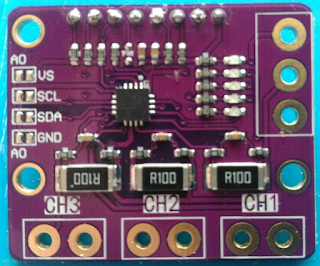Bench power supply revisited: Digital Control
The usual way to control a DC/DC power supply is to send a fraction of the output voltage to the feedback pin. The fraction-ing is done using a potentiometer i.e. a resistance divider.
The DC/DC converter will adapt the output voltage so that the feedback pin reaches a constant value (typically 0.8v or 1.2v)
If Vo*Divider < 1.2 v, the DC/DC will increase Vout
If Vo*Divider > 1.2 v, the DC/DCDC will decrease Vout
Nice ans simple , but two caveats :
- You cannot have Vo < Feedback, so not possible to do 0.5v for example
- It cannot be controlled digitally. Using a digital potentiometer is not really an option. They have strong limitations regarding voltage and resistance.
So instead, what we will do is directly drive the feedback pin in a slightly more complicated way.
To do that, we add a difference amplifier to compare 1/11th of Vout to a voltage reference (Vref).
That voltage Vref will be set digitally.
Same story as before, if Vout/11 < Vref, the Feedback pin will be < 1.2v and the DCDC will raise Vout.
So with a 0--3.3 v Vref, we can have ~0---35 v Vout.
It is important to note that the comparator must be amplifying, i.e. we get N*(Vout/11-Vref)
If we dont it that way, it will oscillate between 0 and MaxVout
There will be a slight offset between Vref and Vout/11 , i.e. Feedback/Gain
So the gain must be high enough so that the offset is a few mV.
Additionally, we will use the same scheme to add current limiting.
We add a shunt resistor to get a voltage proportional to the current, then compare it to Iref.
If I > Iref, the FB pin will go higher than 1.2 v and Vout will go down.
Both Vref and Iref will be driven by cheap DACs.
Bingo, we have a generic digitally driver DC/DC controller with current limiting.





Comments
Post a Comment